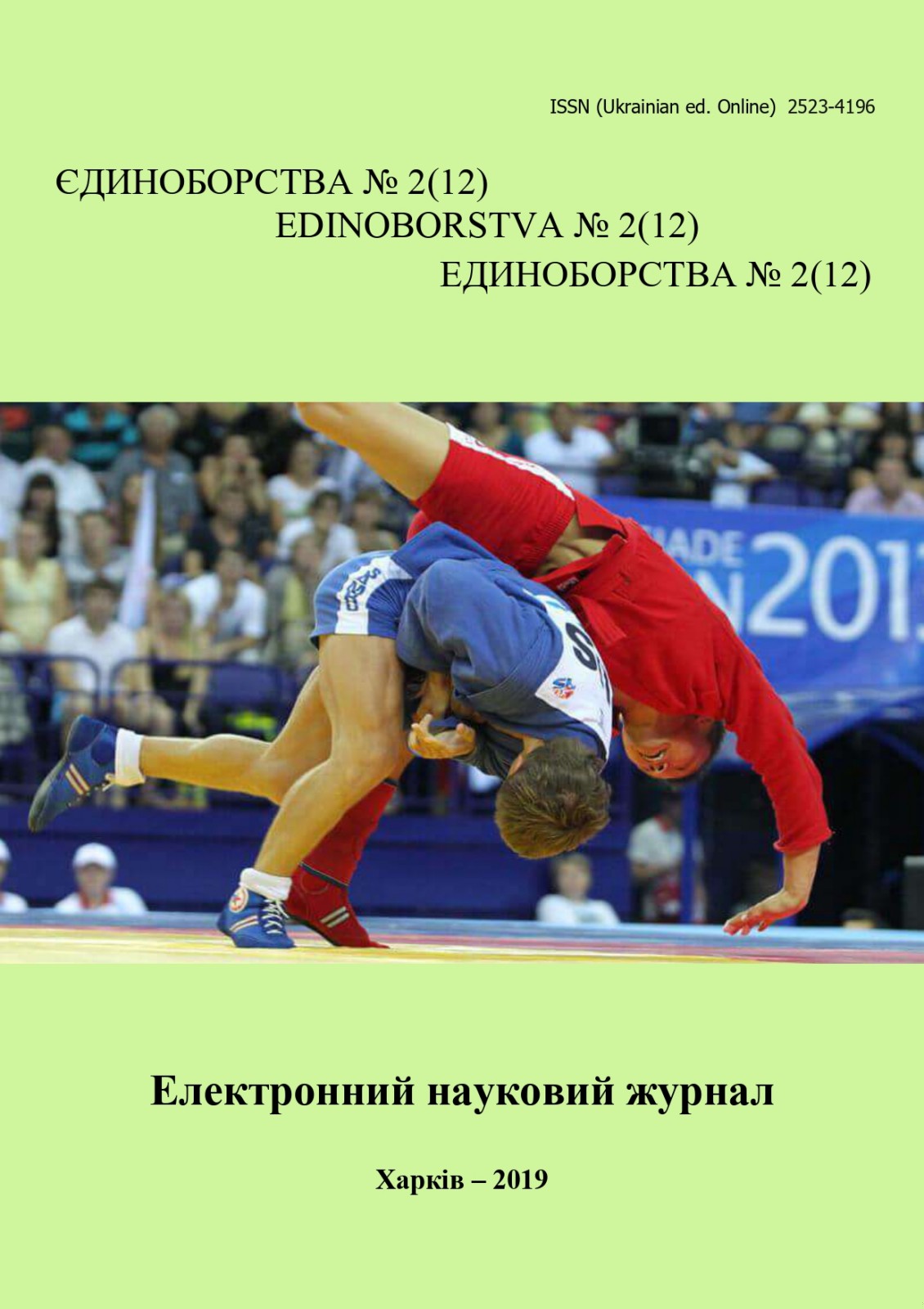Assessment of biomechanics characteristics in single combats by means of the mobile app
Keywords:
biomechanics characteristics, single combats, model, technology, control points, algorithm, computer programAbstract
Purpose: to execute approbation of the computer program for definition of biomechanics characteristics in single combats. Materials and methods. Objective assessment of performance of techniques in single combats is of great importance, both for beginners, and for the qualified athletes. The perspective way it improvement of a control system of sports activity with the introduction in training process of information technologies which necessary for information. The main task of according to a number of experts in the field of single combats are biomechanics analysis of movements of athletes by means of the contactless techniques. Development of computer programs for definition of biomechanics characteristics can become an instrument which will allow to solve two main objectives of a sports training in single combats: researches of movements and training in it. In a research the following methods were used: theoretical analysis of scientific and methodical literature, tool method, methods of mathematical statistics. Approval of the computer program for determination of features of biomechanics in duels is executed. Results. The received results allowed to define differences between the made computer analysis and model values. Objective evaluation of the work of the computer program for definition of biomechanics characteristics in single combats is received. The main directions are determined by improvement of work of the computer program. Conclusions. As a result of the theoretical analysis of scientific and methodical literature it became clear that definition of biomechanics characteristics with use of tool methods attracts huge interest for assessment of level of technical skill in single combats. The comparative analysis of results of a research showed existence of insignificant differences between the received values and model (for 2-dimensional models of 2,8 %; for 3-dimensional models 4,1 %), it can be the basis to recommend this computer program for determination of biomechanics in single combats.
References
Алексеев, А. Ф. (2010). «Моделирование тренировочных заданий в единоборствах». Физическое воспитание студентов: Научный журнал, 3-7.
Ашанин, В. С. (2015). «Использование компьютерных технологий для оценки сенсомоторных реакций в единоборствах». Слобожанський науково-спортивний вiсник,15-18.
Гавердовский, Ю. К. (2007). Обучение спортивным движениям. Биомеханика. Методология. Дидактика. Физкультура и спорт, Москва.
Платонов, В. Н. (2015). Система подготовки спортсменов в олимпийском спорте. Общая те- ория и ее практические приложения : учебник [для тренеров] : 2 кн. Олимп. лит., Киев.
Кашкаров, В. А. (2009). «К вопросу о тренировке и диагностике координационных способностей юных тхэквондистов». Культура физическая и здоровье, № 4, 49- 50.
Лапутiн A. M. (2005). Біомеханіка спорту. Олімпійська література, Київ.
Романенко, В. В. (2007). «Построение биомеханических моделей основных технических приёмов выполняемых ногами для таэквондистов-новичков». Слобожанський науково-спортивний вiсник, 281-285.
Романенко, В. В., & Веретельникова, Н. А. (2017). «Биомеханический анализ техники в единоборствах». Единоборства № 4, 74-78.
Романенко, В. В., Голоха, В. Л., & Веретельникова, Н. А. (2018). «Оценка и анализ подготовленности квалифицированных тхеквондистов». Единоборства, № 1, 58-69.
Ровний, А. С. Романенко, В. В., & Пашков, И. Н. (2013). Управление подготовкой тхэквондистов. Монография. Харьков.
Шулика, Ю. А. (2006). Дзюдо. Система и борьба: учебник для СДЮШОР, спортивных факультетов педагогических институтов, техникумов физической культуры и училищ олимпийского резерва. Феникс, Ростов на Дону.
Шулика, Ю. А. (2006). Тхэквондо. Теория и методика. Том 1. Спортивное единоборство: учебник для СДЮШОР, спортивных факультетов педагогических институтов, техникумов физической культуры и училищ олимпийского резерва. Феникс, Ростов на Дону.
Zatsiorsky, V. (2000). «Biomechanics in Sport: Performance Enhancement and Injury Prevention», IOC Medical Commission ; International Federation of Sports Medicine, 667.













